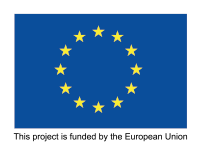
Beyond "once upon a time", an alternative space to talk : Power Stories
For those of you who don’t know, “Power Stories” is the name we give to storytelling events that consist of storytellers and listeners. I say it so simply, but there is a mountain of work behind it, 18 storytellers, 18 stories, 18 lives in the background. There are 2 trainers. There is a months-long preparation process. As part of this process, I also evaluate Power Stories from the humble perspective of a communicator.
Before I worked in the civic space, I would say that communication work should only be in the hands of “people who understand ethics”. Now I work in the civic space and I am so sure that advertising, media, newspapers, magazines, events and even storytelling, whatever is involved, these communication tasks should definitely be in the hands of “people who know something about ethics”. Because having a space where you can tell stories and where people can listen is a very serious power to influence people, and which storyteller has that power can sometimes shape world history. Now let’s move on to our storytellers and their power stories, which are as powerful as their name… I don’t know how much place they occupy in world history, but it's worth talking about the importance of the place they occupy in the civic sphere!
When telling power stories, the storyteller addresses a large or small audience and the storyteller has a space. Because of the nature of addressing the space they have, the endeavour to influence the listener comes into play and when the listener’s reactions are included in the seemingly one-way communication process, the interaction begins. This is where the power of the space they have begins for the storyteller who is telling a real story. For in the space they have, they announce to others the issues that concern them, their struggle in the field of rights, their experiences and their own story suddenly becomes everyone’s story. The listeners often react by saying “this is my story too”. Each of the processes that lead to outcomes such as togetherness, awareness, the embodiment of empowerment and raising one's voice is part of the communication. Therein lies the value of Power Stories for me, a humble communicator. Because it creates an alternative space for civic space actors to speak. A space for those whose voices are rarely heard, who may not even be able to speak, to represent themselves, to tell, to speak, to come together with other voices and become stronger.
A process that began almost 7 months ago has been good for all of us
We started receiving applications on 27 December 2023 to determine the Power Stories narrators and unfortunately, due to limited resources, we had to determine 18 narrators. I also supported the jury we formed to evaluate the applications from the communications team. Although there were many criteria to determine the storytellers, I evaluated the applications from a communications perspective. Why did they want to tell stories, why did they want to meet with the audience? These stories needed to weave solidarity after listening to them, maybe give someone hope, give someone an idea and make them say we can do it, let us just come together, and that's what happened. Of course, the training process was very important at that point. After the storytelling training that the storytellers received to talk about the rights violations they had suffered, the inequalities they had experienced and their wellbeing, a great piece of work emerged.
We spent the application process asking ourselves what would increase solidarity if we heard it, what would make us stronger if we heard it, what would make us hear flashes, maybe we would suddenly experience an emotional explosion, but what voices would be good for us and the civic space?
I will give you the answer now: if we hear 18 powerful stories, that would be good for us. That felt very good to me. Aside from the reality of the stories, these stories sound so sincere, hopeful and really powerful! As you listen to these stories, you witness the fragility, weakness and sometimes exhaustion actually come back to life as they get up, run, fight back and move. The stories do not take the listener to faraway lands, but right into the centre of reality. They remind us of what we forget in our daily lives. In some you hear yourself, in others you listen attentively to both the narrator and yourself.
When art intertwined with reality, mixed feelings and thoughts were collected and lined up. After hearing the real, sometimes very hard, traumatic stories from life, my heart and my brain were in the same place for the first time.
Some stories are from recent times, others from very old times. Most of them verbalise and remind us of traumatic events from the past. Some are about migration, some about earthquakes, some about class, some about women, some about ecology, but we also hear about rights violations and sometimes about individual and sometimes about organised struggles against these violations. As these stories are told, both the listeners and the tellers unload their emotional baggage and a catharsis is experienced with the process of realisation that follows. The strength begins with the verbalisation of traumatic events and you can see the solidarity that arises in this area. Both within the work and as a listener to really difficult stories, I have found that the fact that Power Stories succeeds in creating a safe space is a hallmark of this work.
Dear readers, we do a lot of writing and drawing so that stories from the civic space can be heard and shared, but such powerful work does not always happen. For this reason, I have been thinking about how and by what means such powerful work can reach more people. On the one hand, I agree with the idea that the expansion of alternative fields with new communication technologies offers the possibility of making voices from the civic space heard. On the other hand, I am looking for an answer to the question of how effective high-impact work can be in the digital sphere because it is done in close contact. Where will this work be organisationally connected? Can we add another stitch to solidarity when we spread the stories? I will continue to search for the answers to these questions, and you will stay together with solidarity, with hope.

Subscribe to STGM Youtube Channel!
On the STGM YouTube Channel, you can find various tutorials, presentations and current discussions on civil society. Check out our channel now and subscribe.




